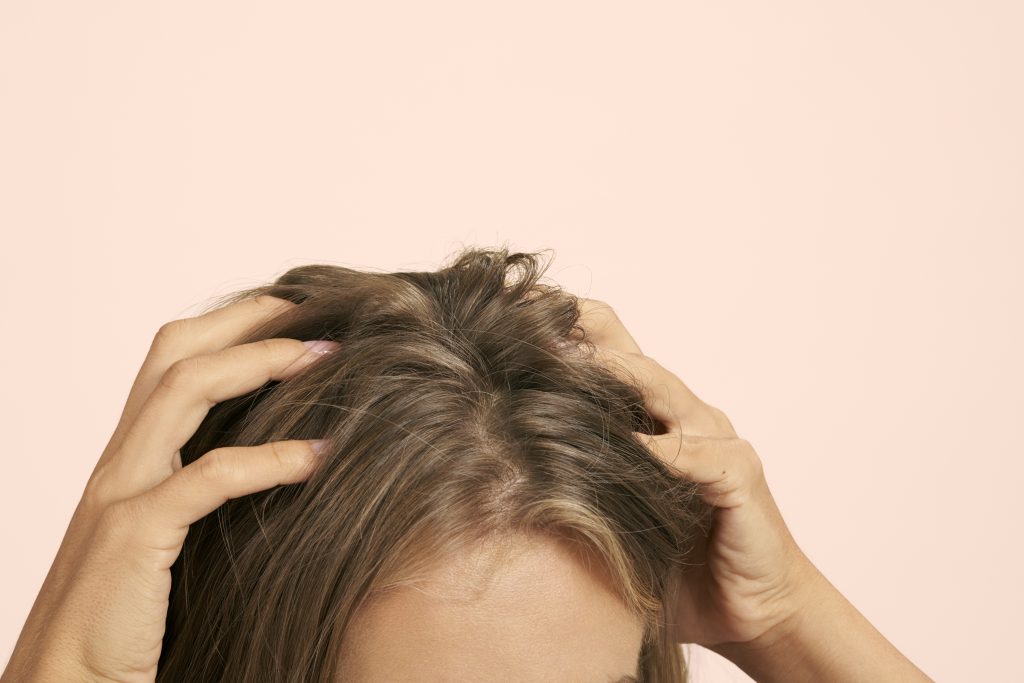Identifying 4C Hair
One of the most distinguishing features of 4C hair is its tightly coiled pattern. Unlike 4A and 4B hair, which may have more defined curls or zig-zag patterns, 4C hair typically forms tight coils that are densely packed together. You can identify your hair type through the coil shape—4C often showcases a zig-zag or S-shaped pattern, contributing to the unique texture of 4C hair.
4C hair often has high porosity, meaning that the hair cuticles are more open and prone to absorbing moisture quickly but also losing it rapidly. This can make 4C hair more susceptible to dryness and breakage, requiring regular moisturizing and sealing to maintain hydration and strength.
Often a thick and dense texture, with individual strands ranging from fine to coarse, this density adds to the fullness and volume of 4C hair, giving it a bold and striking appearance.
Daily Routines for 4C Hair Health
Embracing the beauty of 4C hair involves understanding its characteristics and adopting a tailored care and styling routine to keep it healthy, hydrated, and flourishing.
Moisture Matters:
4C hair often struggles to retain moisture, making hydration a top priority. Opt for curl creams specifically formulated for coily hair, as they tend to be thicker and provide better hydration. After moisturizing, seal in the moisture with a hair oil to keep your coils hydrated throughout the day, even when rocking protective styles. While keeping your hair moisturized, never load up 4C hair with oils while it’s still wet, as it forms a barrier between your hair and the moisturizing product.
Gentle Detangling:
Regular detangling is crucial for managing 4C hair and preventing matting and breakage. Take your time with this process, using your fingers to gently work through knots and tangles. Apply a conditioner with plenty of slip to aid in detangling, and consider using a wide-tooth comb for additional smoothing after finger-detangling. Remember, patience is key to maintaining the health and integrity of your strands.
Mindful Product Selection:
Be mindful of the ingredients in your hair products, avoiding sulfates, parabens, and alcohol-based gels that can strip your hair of moisture and cause damage in the long run. Instead, opt for a custom shampoo with natural ingredients like argan oil, acacia collagen and biotin that strengthen and nourish your 4C curls without weighing them down.
Protective Nighttime Routine:
Preserve moisture and minimize breakage by wrapping your hair in a silk bonnet or scarf before bed, or investing in a silk pillowcase to reduce friction and tangling. Avoid cotton materials that absorb moisture and cause friction, leading to dryness and damage.
Trim Split Ends Regularly:
Keep your ends healthy and split end-free by trimming them regularly, especially if you use heat styling tools or notice signs of damage. Prioritizing regular trims will help maintain the overall health and appearance of your 4C curls.
Incorporate Protective Styles:
Simple, everyday hairstyles can also play a significant role in maintaining hair health, offering both protection and style without excessive manipulation. From chic puffs to sleek buns and effortless twists, these styles not only keep 4C hair looking sleek but also contribute to its overall health by minimizing stress on the strands.
Overcoming Common 4C Hair Challenges
Overcoming common challenges like shrinkage, dryness, and breakage is essential for maintaining healthy and flourishing curls. Shrinkage can sometimes leave curls appearing shorter than they actually are but techniques such as banding or African threading offer natural ways to stretch hair without resorting to heat, allowing for greater length and versatility in styling. African threading uses strands of thread to wrap tightly around sections of hair, creating neat and intricate patterns creating a sleek and elegant look, or the threaded sections can be twisted or braided for added texture and flair.
However, managing dryness and breakage remains a top priority for 4C hair types with regular moisturizing and sealing routines helping to lock in moisture and combat the naturally high porosity of 4C hair. Additionally, finding the right balance in washing frequency can prevent over-drying while protective styling provides a shield against environmental stressors and manipulation, reducing the risk of breakage and promoting healthier, stronger strands.
The Best Products for 4C Hair
Selecting the right products is key to maintaining 4C hairs’s health and vitality. Opt for sulfate-free shampoos that gently cleanse without stripping the hair of its natural oils, preserving its moisture balance. Follow up with heavy creams that are rich in nourishing ingredients, providing much-needed hydration and protection to combat dryness and breakage. Prose specifically tailor products to the needs of your specific hair type, ensuring that your curls are pampered and protected with every wash and styling session.
Mastering the LOC Method for 4C Hair
Maximize moisture retention with the LOC (Leave-In, Oil, Cream) method, which layers products in a specific order to lock in hydration. Start with a leave-in conditioner, an essential step that provides hydration directly to the hair shaft, replenishing moisture lost during washing or styling. Leave-in conditioners typically contain ingredients like humectants and emollients, which attract and retain moisture in the hair, leaving it feeling soft and supple.
Follow up with hair oil to keep your coils moisturized and protected throughout the day. Oils act as a barrier, locking moisture into the hair shaft and preventing it from escaping too quickly. Additionally, oils provide nourishment to the hair, helping to improve its elasticity and shine.
Finish with a curl cream, which are thicker than leave-in conditioners and provide additional hydration and nourishment to the hair. They help to soften and smooth the hair cuticle, reducing unwanted frizz. Creams also add a layer of protection to the hair, keeping it hydrated and healthy between washes.
Styling 4C Hair Without Damage
4C hair is incredibly versatile. It can be styled in a variety of ways, including twist-outs, braid-outs, wash-and-gos, and protective styles like braids and twists. This can help reduce friction and tension on the hair strands, leading to less breakage and damage over time, as well as locking in moisture by preventing the hair from being exposed to environmental elements that can cause dryness.
Protective styles also require minimal daily maintenance, making them ideal for individuals with busy lifestyles or those looking to simplify their hair care routine. This allows for more time between washes and styling sessions, promoting overall hair health and longevity.
Start the Prose consultation now and discover your bespoke 4C haircare routine.





